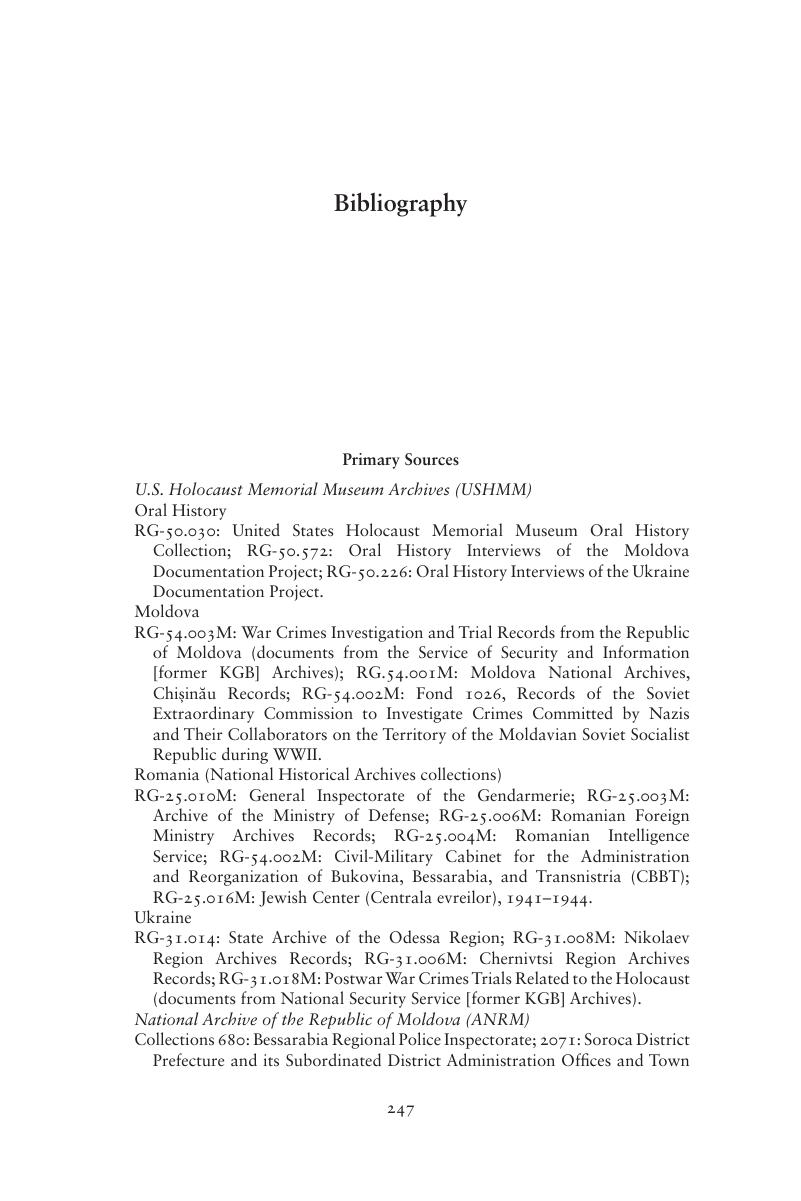 The State, Antisemitism, and Collaboration in the Holocaust
The State, Antisemitism, and Collaboration in the Holocaust Book contents
- The State, Antisemitism, and Collaboration in the Holocaust
- The State, Antisemitism, and Collaboration in the Holocaust
- Copyright page
- Dedication
- Contents
- Figures and Table
- Book part
- Maps
- Introduction
- 1 Experiencing the Russian Empire
- 2 Antisemitism Reframed: Bessarabia within the Romanian State
- 3 Committed to Change: Fighting Antisemitism and Integrating Jews in Soviet Transnistria
- 4 Under Assault: Civilian Behavior toward Jews during the Holocaust in Bessarabia
- 5 Jews and Their Neighbors in Occupied Transnistria
- 6 Substantiating and Explaining the Differences
- Bibliography
- Index
- References
Bibliography
Published online by Cambridge University Press: 05 March 2016
- The State, Antisemitism, and Collaboration in the Holocaust
- The State, Antisemitism, and Collaboration in the Holocaust
- Copyright page
- Dedication
- Contents
- Figures and Table
- Book part
- Maps
- Introduction
- 1 Experiencing the Russian Empire
- 2 Antisemitism Reframed: Bessarabia within the Romanian State
- 3 Committed to Change: Fighting Antisemitism and Integrating Jews in Soviet Transnistria
- 4 Under Assault: Civilian Behavior toward Jews during the Holocaust in Bessarabia
- 5 Jews and Their Neighbors in Occupied Transnistria
- 6 Substantiating and Explaining the Differences
- Bibliography
- Index
- References
Summary

- Type
- Chapter
- Information
- The State, Antisemitism, and Collaboration in the HolocaustThe Borderlands of Romania and the Soviet Union, pp. 247 - 262Publisher: Cambridge University PressPrint publication year: 2016


